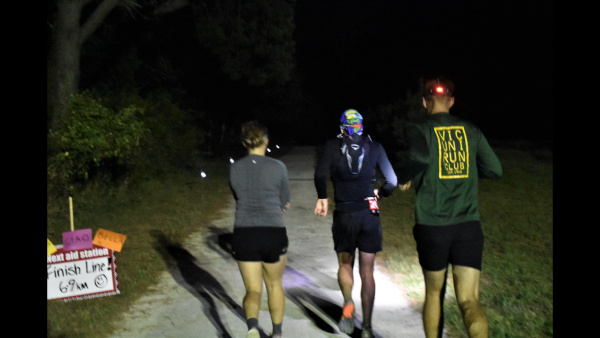Project Managing an Ultra Marathon - Tarawera 102k

Mike Monastra
March 9, 2020 3 min readA project is any complex task with defined start and end points. This process can be broken into 4 phases - concept, design, construction and close-out. Normally we look at this is in the context of constructing a new building or facility. But with that definition in mind, it is fair to call a running race a project as well. My most recent running project was the Tarawera 102km Ultramarathon (TUM). It took about 8 months of hard and consistent training, researching, visualisation and planning, followed by the near 18 hours in the beautiful Rotorua forest on race day.
How do you run 100kms? It seems like a big goal, right? But as with anything, if you break it down it is really just a series of manageable steps. All you need is a little thought and dedication. And carbs. Lots of carbs! Here’s how a construction project manager looks at it:
Concept – In construction this is where the planning starts, and the feasibility of a venture is determined. For me it was a little different. I had just finished reading Eat and Run by Scott Jurek (one of the world’s top ultra-runners) and was fired up and ready for something big. Rotorua is the home to some of the world’s best trails, so the TUM was an easy choice. The difference to a normal project here was I wanted something big enough that making it to the end was not guaranteed - this is not a strategy we’d recommend for construction!
Design – Here the details of the concept are determined so that they can be realised during construction. Training was based around a constantly updating plan, I learned to put more emphasis on building an achievable plan, rather an aggressive one. It feels much better to plan 3 runs in a week and do all 3, rather than plan 5 and do 4. With the help of my partner, we put together a nutrition plan for the race to ensure I would be consuming enough carbs, calories and water throughout the race. I couldn’t believe how well it worked, nearly 18 hours on the move and I didn’t get hungry or thirsty once. The 7 P’s proving their value once again.*

At the start - photo by Zahra Shahtahmasebi
Construction – Like construction is the physical work preceded by design and planning, the race itself is only a small part of the project. The race was a success for me but gruelling is an understatement. It was a test of my mental strength much more that physical (though that was tested pretty damn hard too). It's funny how perspective changes things. My longest run prior to the race was 7 hours, but on the day I’d hardly even checked the time in the first 7 hours and I wasn’t anywhere near finished by that point. The first aid station with spectator access was 60kms/9 hours in and it was great to see my crew with smiling faces and roast potatoes in hand. The kms did seem to get longer after this point, my pace slowed and sitting down felt better with each aid station I stopped at. Regardless, the whole day flew by and before I knew it I was sprinting for the finish line – I don’t think I’ve ever run so fast, or wanted to take my shoes off more.

Closing in on the finish - photo by Zahra Shahtahmasebi
Closeout – Sunday morning hurt, in a good way though. Kind of half-way between a bender induced hangover and how a punching bag must feel after a workout. It’s a bit twisted, but that pain feels so good when you know you’ve fought so hard to earn it.
If you’ve read this far you might have the same question in your head as everyone else seems to ask me. Why?! My answer is: “Because it's hard”. How are you supposed to know where your potential lies if you don’t push your limits? I crossed that finish line at 102kms still running, so I guess I haven’t found mine yet!
Mike.
*Proper Prior Planning Prevents Piss Poor Performance


